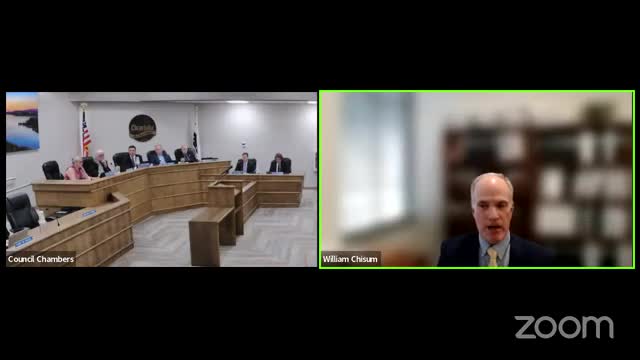Koy Nation demands stronger mitigation measures for Danko housing project
February 01, 2024 | Clearlake, Lake County, California

This article was created by AI summarizing key points discussed. AI makes mistakes, so for full details and context, please refer to the video of the full meeting. Please report any errors so we can fix them. Report an error »

In the heart of Clearlake, California, the City Council convened on February 1, 2024, to address pressing community issues, with a significant focus on housing development and its implications for local tribes. The meeting unfolded under the watchful eyes of council members and community stakeholders, highlighting the delicate balance between progress and preservation.
A key moment came when representatives from the Koy Nation voiced their concerns regarding a proposed housing project. They acknowledged the urgent need for housing in the area but emphasized the importance of implementing proper mitigation measures to protect their cultural heritage and ancestral resources. The Koy Nation expressed appreciation for the steps taken thus far in the development process but pointed out that the project still required additional actions to ensure legal compliance and respect for their tribal rights.
The representatives raised critical questions about the adequacy of the city’s consultation efforts under Assembly Bill 52, which mandates meaningful engagement with Native American tribes. They argued that the city had prematurely declared the consultation process complete after only two meetings, without fully considering the Koy Nation's expertise or continuing to collaborate in good faith. This early conclusion left many concerns unaddressed, particularly regarding the potential impacts on the Koy Nation's cultural resources.
The Koy Nation called for more robust mitigation plans and protocols, stressing the need for ongoing tribal monitoring of ground activities within the project area. They highlighted the cumulative effects of this and other developments on their community, urging the council to take a more proactive approach in safeguarding their heritage and ensuring that future projects do not further deplete their cultural resources.
As the meeting concluded, it was clear that the dialogue between the city and the Koy Nation would need to continue, with both sides recognizing the importance of finding a path forward that honors the past while addressing the pressing needs of the present. The outcome of this discussion could set a precedent for how Clearlake navigates the intersection of development and cultural preservation in the future.
A key moment came when representatives from the Koy Nation voiced their concerns regarding a proposed housing project. They acknowledged the urgent need for housing in the area but emphasized the importance of implementing proper mitigation measures to protect their cultural heritage and ancestral resources. The Koy Nation expressed appreciation for the steps taken thus far in the development process but pointed out that the project still required additional actions to ensure legal compliance and respect for their tribal rights.
The representatives raised critical questions about the adequacy of the city’s consultation efforts under Assembly Bill 52, which mandates meaningful engagement with Native American tribes. They argued that the city had prematurely declared the consultation process complete after only two meetings, without fully considering the Koy Nation's expertise or continuing to collaborate in good faith. This early conclusion left many concerns unaddressed, particularly regarding the potential impacts on the Koy Nation's cultural resources.
The Koy Nation called for more robust mitigation plans and protocols, stressing the need for ongoing tribal monitoring of ground activities within the project area. They highlighted the cumulative effects of this and other developments on their community, urging the council to take a more proactive approach in safeguarding their heritage and ensuring that future projects do not further deplete their cultural resources.
As the meeting concluded, it was clear that the dialogue between the city and the Koy Nation would need to continue, with both sides recognizing the importance of finding a path forward that honors the past while addressing the pressing needs of the present. The outcome of this discussion could set a precedent for how Clearlake navigates the intersection of development and cultural preservation in the future.
View full meeting
This article is based on a recent meeting—watch the full video and explore the complete transcript for deeper insights into the discussion.
View full meeting
